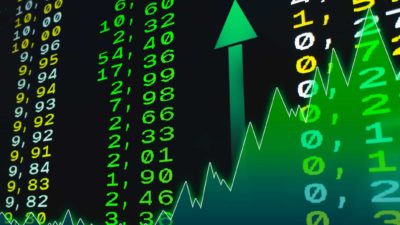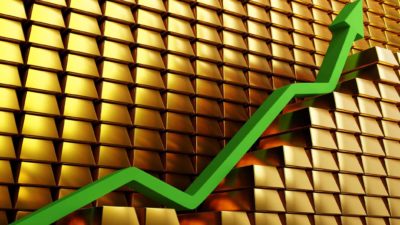One of the biggest concerns I hear from retail investors is that ASX share prices are looking frothy.
Meaning that that the price-to-earnings (P/E) ratio of many ASX shares is running higher than their historical averages.
As you probably know, the P/E ratio is a way to measure a company's current share price compared to its earnings-per-share (EPS).
For example, if a stock is trading for $18 and earning $1 per share, the P/E ratio is 18 times.
Now I use 18 for a reason here.
Andrew McAuley is the chief investment officer for Credit Suisse Group's (NYSE: CS) Australian Private Banking arm. And, as the Australian Financial Review reports, he calculates the 12-month forward P/E ratio for the S&P/ASX 200 Index (ASX: XJO) is 18 times. (The forward P/E ratio utilises estimated future earnings.)
McAuley says that's 20% higher than the 10-year average for the ASX 200. Additionally, he notes that the MSCI World Index, with a forward P/E of 21.2 times, is 40% above its historical average.
So, investors aren't off base when they mention share prices, overall, appear a bit frothy.
Which brings us to the first reason on ASX 200 share prices (and indeed, those across most global indices) could run far higher from here.
Reason 1
Rock bottom interest rates.
Interest rates in Australia are so low, in fact, that when you take inflation into account, the Reserve Bank of Australia's (RBA) 0.1% official cash rate is effectively negative.
And RBA Governor, Philip Lowe, has made it clear the bank is highly unlikely to raise those rates anytime soon.
Credit Suisse's McAuley points out that these record low rates are supporting the ASX and other share markets across the globe. And despite the elevated forward P/E ratios, he says, "If you look at the relative attractiveness of equities to bonds, the ASX still looks reasonable value."
Reason 2
Low rates are one of the pillars supporting share markets during the pandemic-driven economic slowdown.
But as the global financial crisis (GFC) showed us in 2008, low rates alone aren't enough. Back then, central banks the world over did cut rates. In Australia, the RBA slashed the official cash rate from 7.25% in August 2008 down to 3.0% by April 2009. (If only it had that much fire power left today!)
While rate cuts helped, governments largely held back with any fiscal stimulus. In fact, many nations went the other way, introducing austerity measures to rein in ballooning debt levels.
But this time is different.
Debt, with a nod of thanks to negative real (inflation adjusted) interest rates, has taken a back seat to spurring on locked down economies.
Which brings us to the second reason share prices on the ASX 200 could hit new record highs in the coming months.
Massive government stimulus packages.
Unlike the mismatched responses we saw during the GFC, the COVID-19 crisis has seen a coordinated approach between governments and their central banks. Governments the world over have unleashed trillions of dollars in stimulus spending and other support measures since the onset of the pandemic.
In Australia, JobKeeper and the boosted JobSeeker allowance have been crucial at keeping unemployment down and keeping money in consumers' pockets.
Evan Brown, head of multi-asset strategy at UBS Asset Management, explains this combined approach from central banks and governments has opened the door to higher P/E ratios (quoted by Bloomberg):
There's probably a higher floor to multiples because the market will know that as soon as we hit that recession, you're getting not just the monetary policy offset but fiscal as well. And so what that does is cut off the left tail and leaves markets to explore higher multiples perhaps than would have been the baseline before.
Indeed…
Reason 3
The ASX 200 is populated, mostly, by quality companies with strong management and good growth outlooks.
Some ASX 200 shares, especially in the technology space, have actually benefitted from the changes inflicted by the virus as people shifted to working, shopping and socialising from home.
But many ASX 200 share prices remain depressed from their pre-COVID levels. That's especially true in the travel and leisure sectors.
Which brings us to the third reason the ASX 200 could be poised to set new all-time highs.
The rollout of an effective vaccine.
November has delivered not one, but three potential vaccines, all reporting to be more than 90% effective in late stage trials.
Now even if all three are approved for mass production shortly, global vaccinations won't happen overnight.
But as Mike Loewengart, managing director of investment strategy at E*Trade Financial, reminds us, markets are forward looking (quoted by Bloomberg):
We remain on fragile footing heading into the winter as cases continue to climb globally. And since the markets are forward looking, this data will likely be taken in stride. The markets tend to cheer on certainty so the presidential transition and vaccine developments are two factors it's latched onto lately.
As for the outlook for the Aussie economy and the ASX?
Shane Oliver, AMP Capital's head of investment strategy says (from the AFR):
The Australian economy and share market with their relatively high exposure to resources and financials are relatively cyclical in contrast to the US that has a higher exposure to 'growth' sectors like IT and healthcare. If the combination of a vaccine and global stimulus drives a strong global economic recovery in 2021 then the Australian economy, shares and Australian dollar are likely to be relative beneficiaries.
Down 0.3% in intraday trade, the ASX 200 needs to gain 7.49% to set a new record high.







